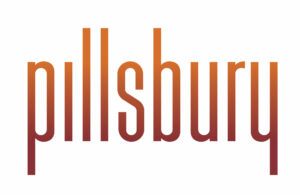CAFC Says USPTO Arguments for Rejecting Google Patent Application Lack Support in Record
“In the absence of any specific findings by the Board on these matters, we may not adopt the PTO’s fact-based arguments in the first instance on appeal.” – CAFC
The U.S. Court of Appeals for the Federal Circuit (CAFC) in a precedential decision today vacated a Patent Trial and Appeal Board (PTAB) finding that certain claims of Google, LLC’s U.S. Patent Application No. 14/628,093 were obvious. The CAFC opinion, authored by Chief Judge Moore, said the U.S. Patent and Trademark Office’s (USPTO’s) arguments on appeal “cannot sustain the Board’s decision below because they do not reflect the reasoning or findings the Board actually invoked.”
Google’s patent application has to do with methods for filtering the results of an internet search query such that only age-appropriate results for a user are displayed. At issue were two prior art references: Parthasarathy, which “discloses methods of filtering search results by comparing a “search-query-intent score” to a predetermined safety threshold” and Rose, which is titled “System and Method for Improving the Ranking of Information Retrieval Results for Short Queries.”
Examiner Rejection
Google’s application initially received a non-final obviousness rejection based on Parthasarathy, to which Google responded by amending Claim 1 to add a limitation indicating that the predetermined threshold value is “determined based on a number of words included in the search query.” However, the examiner again rejected the application, this time based on Rose in combination with Parthasarathy. The examiner found that Rose disclosed a threshold based on the number of words and that “it would have been obvious to combine Rose and Parthasarathy to achieve the claimed threshold because ‘analyzing a query for determining the query length and using the query length as a threshold is very well known in the art and doing so would further provide for assigning weight to a long or a short query for retrieving documents.’” Google countered that the combination of the two references “at most described increasing a score based on the number of words in a query, not determining whether a score was below a threshold that itself depended on query length,” but the examiner disagreed and Google appealed to the PTAB.
What the Board Said (or Didn’t)
The Board, however, affirmed the examiner’s decision, adopting his findings. Google appealed the PTAB’s decision and, on appeal, the USPTO argued that the PTAB decision should be affirmed, and provided examples of how Google’s application represented modifications of the two references that would have been obvious to a skilled artisan to try. But the CAFC ignored these arguments on the basis that the USPTO was presenting reasoning and findings beyond what the Board actually said. The court explained:
“Meritorious or not, the PTO’s arguments cannot sustain the Board’s decision below because they do not reflect the reasoning or findings the Board actually invoked…. Contrary to the PTO’s characterization of the Board’s decision, it did not rest on a finding that there were only two ways to modify Parthasarathy using Rose or suggest that these modifications would have been obvious to try. Indeed, although the Board concluded that modifying Parthasarathy’s threshold to take into account query length would have been obvious…entirely absent from its decision is any discussion of how such a modification would be accomplished. Certainly, the Board did not discuss or suggest the specific modifications the PTO advances on appeal. In the absence of any specific findings by the Board on these matters, we may not adopt the PTO’s fact-based arguments in the first instance on appeal.”
The CAFC added that “squint as we may,” the court was unable to find the arguments presented by the USPTO in the record. While both the Board and the USPTO on appeal said that using query length as a threshold was “very well known in the art,” the CAFC found no evidence cited to support that statement. While the USPTO suggested that “simple logic or common knowledge might fill these evidentiary gaps,” the CAFC said that even common knowledge must still be “supported by evidence and a reasoned explanation.” The court added: “An examiner’s assertion that a particular fact or principle is well-known is not evidentiary support.”
Back to the Board
The court also disagreed that substantial evidence supported the Board’s interpretation of Rose and ultimately concluded the PTAB’s reasoning couldn’t sustain its rejection of the claims. While Google urged the court to reject the USPTO’s arguments on appeal as lacking merit, the court declined to do so in the first instance, since they were not addressed by the examiner or the PTAB. The court thus vacated the Board’s decision and remanded for further proceedings consistent with the opinion.
Eileen McDermott
Eileen McDermott is the Editor-in-Chief of IPWatchdog.com. Eileen is a veteran IP and legal journalist, and no stranger to the intellectual property world, having held editorial and managerial positions at […see more]







